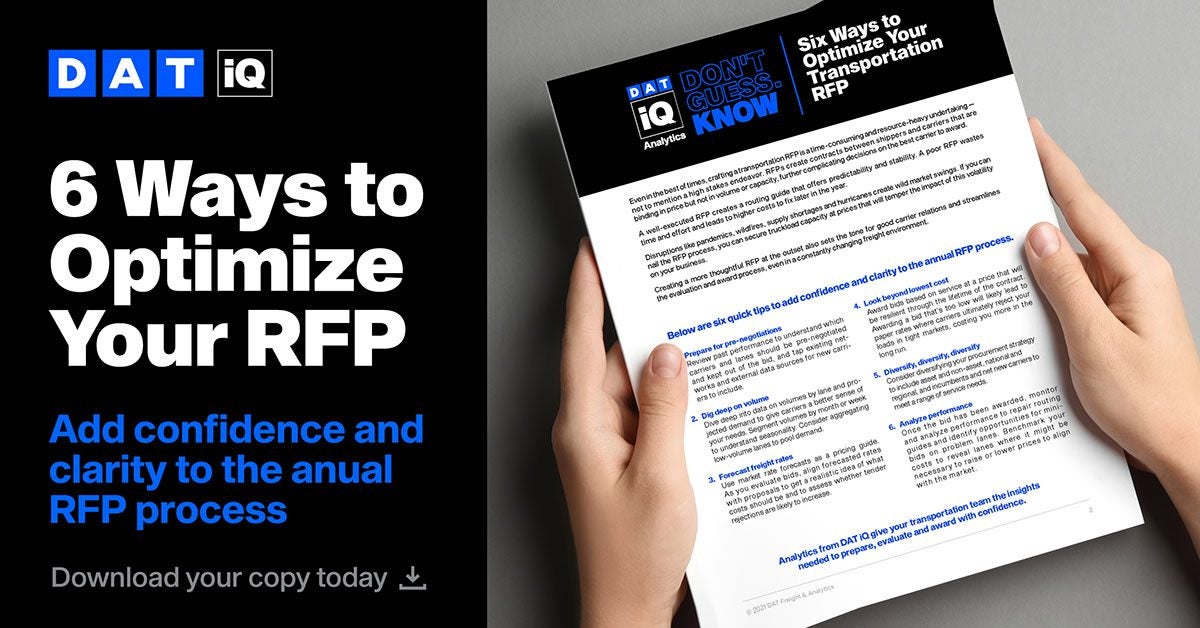Effective transportation RFPs can mean the difference between partnering with the perfect carrier or seeing your budget melt away with every mile. So it makes sense to spend time and resources into creating the perfect RFP, especially when it involves such high stakes.
But there comes a point when RFPs become a resource and time sinkhole. How can you create a contract with carriers that are binding in price but not in volume or capacity?
Our best advice is to arm yourself with as much information as possible.
Dive deep into data on volumes by lane and projected demand to give carriers a better sense of your needs. But don’t stop there. Segment volumes by month or week to understand seasonality.
Review past performance to understand which carriers and lanes should be pre-negotiated and kept out of the bid. This allows you to tap existing networks and external data sources for new carriers to include.
And as we’ve seen in the past year, global, regional or infrastructure disruptions create wild market swings. A well-informed RFP creates a routing guide that offers predictability and stability.
Want to get more RFP tips? Get a free copy of our quick guide, Six Ways to Optimize Your Transportation RFP.


